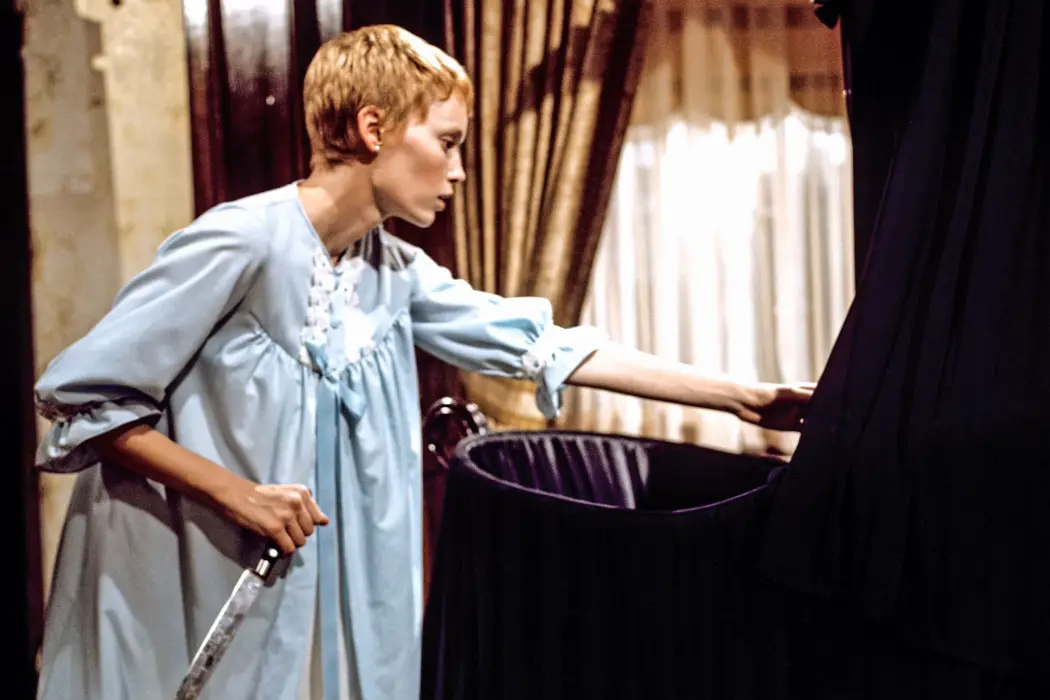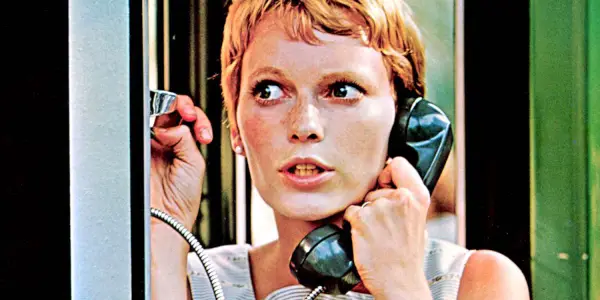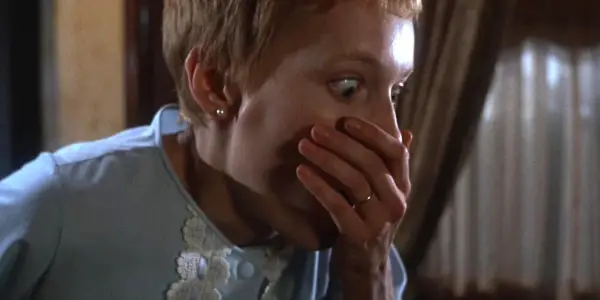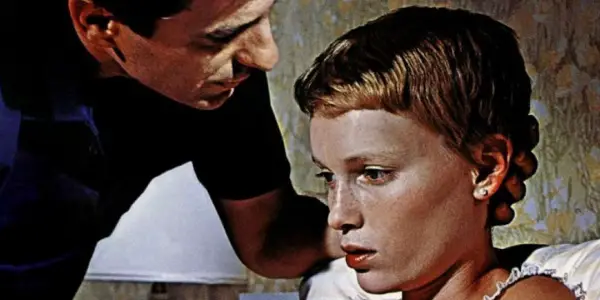Horrific Inquiry: ROSEMARY’S BABY (1968)

Stephanie Archer is 39 year old film fanatic living in…
Welcome back to the newest, and at times goriest, column here at Film Inquiry – Horrific Inquiry. Twice a month, I will be tackling all things horror, each month bringing two films back into the spotlight to terrify and frighten once more. And occasionally looking at those that could have pushed the envelope further. Join us as we dive deep into the heart of horror, but warning, there will be spoilers.
May is the month of mothers. And what better horror film to commemorate the event than with Rosemary’s Baby. A classic in its own right, Rosemary’s Baby always seems to be the film everyone has heard about, but not as many have seen – myself included. From witches to Satan, Rosemary’s Baby has it all, and while it may not have aged as well as hoped, it is still a classic film that has continued to inspire and influence for decades since its release.
Birthing Satan
Watching Rosemary’s Baby for the first time decades later, there is a feeling of having heard this story time and time again. The infiltration of a Satan-worshipping coven to bring forth the son of the devil, all at the sacrifice of unknowing innocents. Yet, having seen this story time and time again, there was a fascination with one of its early moments in cinematic history, Roman Polaski’s adaptation of Ira Levin’s novel of the same name – an undeniable classic.
Looking to settle their roots in a new New York City apartment, Rosemary (Mia Farrow) and Guy Woodhouse (John Cassavetes) find the perfect dream home in the Bramford apartment buildings. While closer to the theater district where Guy performs, their previous landlord and friend Hutch (Maurice Evans) warns them of the history the building has with witchcraft and death. Chalking his superstitions to nothing more than stories, Guy and Rosemary move into an apartment, the pieces of their lives coming together.

Their peaceful oasis is quickly interrupted after a recovering drug addict Rosemary had met in the laundry room commits suicide, the callous nature of the police and reporters speaking to the history of the building. While Terry’s (Victoria Vetri) death is devastating, a newfound friendship is formed as the Castevets attempt to fill the hole left in her wake. Sparking a friendship with Rosemary and Guy – though more specifically Guy – these seemingly intrusive and nosey neighbors start to prove they are more than what they seem.
As Guy’s struggling acting career suddenly gets the break he has been waiting for, the Castevets become a constant influence in both Rosemary and Guy’s lives, especially after a dream-like lucidity allows viewers to understand they are the head of a coven, their rituals around Rosemary seemingly birthing a monster. As Guy and Rosemary agree to grow their family, so too do the neighbors within the Bramford.
Yet, as Rosemary’s pregnancy carries on, she begins to feel as though the ritualistic nightmare was far from a dream and that she is not only surrounded by evil – but carrying it.
Crafting a Classic
While the pace of Rosemary’s Baby years later can seem unbearably slow at times, it allows viewers the time to take in each detail of success the film is able to boast. From the ticking clock to the apartment walls that seem to narrow as the film goes on, there is a pulse to Rosemary’s Baby ticking down and pushing you to the film’s conclusion.

Mia Farrow is hypnotizing. As much as you want to take in the scenery around her, the elements and details she is immersed within fall alway as she demands your attention. There is a depth she provides to Rosemary, not only as a budding mother, but as a human being in the midst of the darkest evil with no control to stop what is happening to her. She evolves with the story, allowing her character to reach the emotional depth required to execute the film’s focus.
Rosemary’s Baby also slips into the surrealist forms of cinema, imbuing it with dreamlike states of allegorical and metaphorical visuals. While the surrealist and reality blend at times, it throws viewers off from the straight lined narrative of the film, forcing them to look deeper within and commit themselves to the film to discover what it all means and subsequently leads to.
Cultural Influence
While a fan of horror, the absence of past viewings of Rosemary’s Baby has definitely left me unaware of many of the cultural references the film has seen in the years since its release. For myself, the primary reference I could not shake while watching the film was the first season of American Horror Story. As Rosemary eats the raw meat and organs, I couldn’t help but think back to Vivian’s (Connie Britton) insatiable devouring of the same as she carried the son of the devil. Even her conception was birthed from the misdirection of reality, where Rosemary believed it to be a nightmare, for Vivian it was the identity of the man in the leather suit.

Another film, mother!, continually came to mind as well while watching Rosemary’s Baby. While the reference can quite literally be inferred from one of the movie posters for mother! eliciting the same imagery as Rosemary’s Baby, it is the the essence of both films that speaks to the cultural influence of the other. The satanic rituals of Rosemary’s Baby is birthed from the desire of a man willing to make a deal with the devil in exchange for the career and success he has always coveted. Through his dealings, it is the mother, Rosemary, who is left to suffer the consequences. As she gives herself completely to the creation of child and satisfaction of husband, she is left with the consequences, to either fight against it or to embrace it.
mother! follows a similar path through its biblical allegories and visual representations, Jennifer Lawrence’s Mother giving herself to her husband’s needs and wants, continuing a demonic and devastating cycle of evil and life. But these are not the only cultural references and inspiration that Rosemary’s Baby has birthed, and it is far from being the last.
Conclusion: Rosemary’s Baby
In a month where we all find ourselves honoring our mothers, Rosemary’s Baby fits the bill for the perfect horror film to revisit this month – and in some cases, finally cross it off the list of must see classics. Highly referenced throughout film and TV, its cinematic influences continue to hold strong, Rosemary’s Baby a classic for the ages.
Have you see Rosemary’s Baby? What did you think? Let us know in the comments below!
Watch Rosemary’s Baby
Does content like this matter to you?
Become a Member and support film journalism. Unlock access to all of Film Inquiry`s great articles. Join a community of like-minded readers who are passionate about cinema - get access to our private members Network, give back to independent filmmakers, and more.













